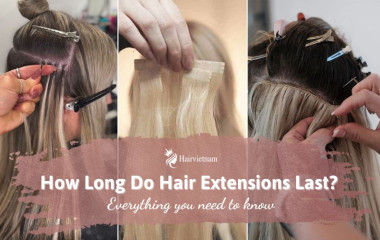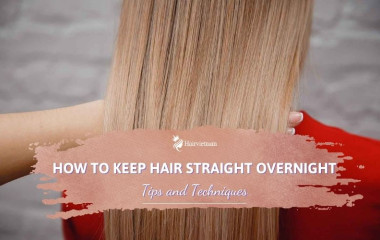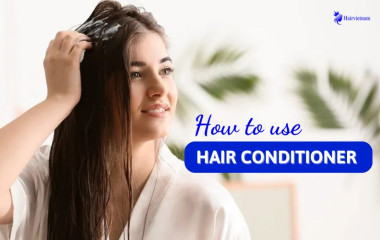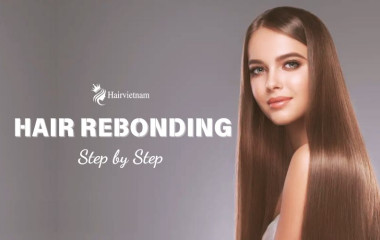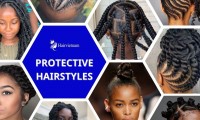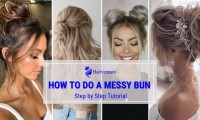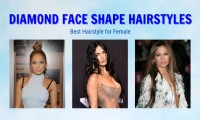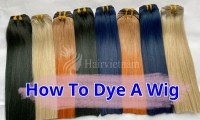Dead Hair vs Healthy Hair: Everything You Need to Know
17/01/2024
Content
Are you hair dead? Learn to identify the signs, understand the causes, and find out how to fix dead hair. We can help you achieve healthier, more vibrant hair.
The problem of dead hairs is widely addressed because people usually face at least some damage there. Add to that, intensive colouring, constant use of hot styling equipment and other poor hair routines often lead to serious damage. The hair damaged needs special treatment to be brought back to become its normal smooth and good looking appearance. Thus, if you are suffering from dry hair, fine hair and split ends then this article is your solution for those problems. In this guide, you will get to know about what is dead hair, how to fix dead hair, what does dead hair looks like and the best solution which is using a hair mask for dead hair.


What is Dead Hair?
Imagine crackly hair that is prone to break and has no lustre of a healthy strand. Dead hair recognition is also important for proper management of the hairs. Deep conditioning routinely, limiting heat usage and avoiding severe chemical treatments are vital steps in giving the damaged hair a new lease of life.
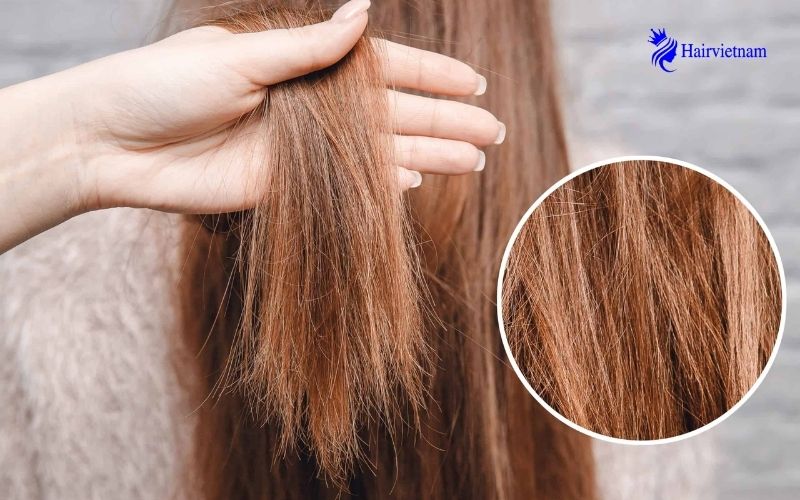
How Does Dead Hair Look Like
Healthy hair has elasticity and bounce, whereas dead hair does not—it is flat and limp. Moreover, it may be more likely to knot up and break. Dead hair is characterized by a general absence of vitality, making it essential to adopt proper care and grooming practices to revive its health and restore a vibrant, glossy appearance.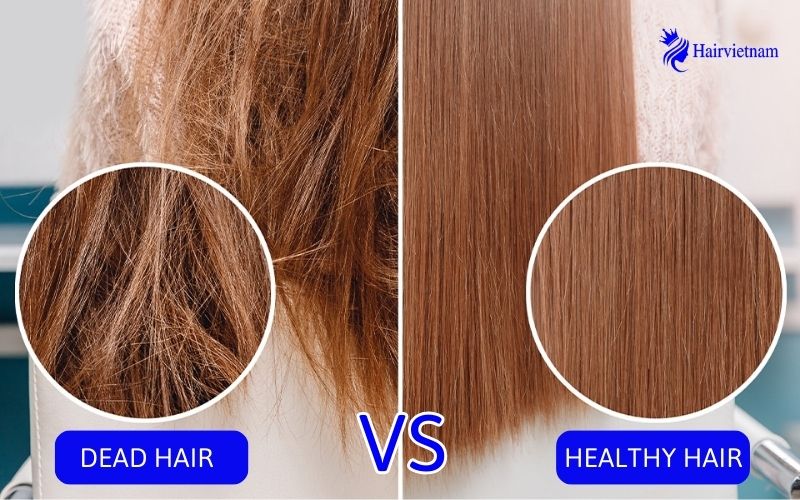
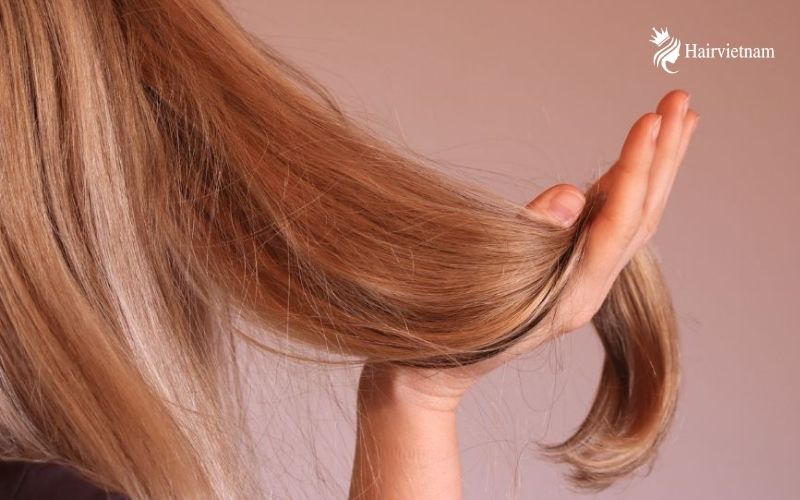
How to Fix Dead Hair
For those grappling with dead hair and seeking an immediate solution for a special occasion, consider HairVietnam Factory. These extensions can seamlessly blend with your natural hair, offering a quick fix for length and volume while you work on restoring the health of your own strands.
The problem of dead hairs is widely addressed because people usually face at least some damage there. Add to that, intensive colouring, constant use of hot styling equipment and other poor hair routines often lead to serious damage. The hair damaged needs special treatment to be brought back to become its normal smooth and good looking appearance. Thus, if you are suffering from dry hair, fine hair and split ends then this article is your solution for those problems. In this guide, you will get to know about what is dead hair, how to fix dead hair, what does dead hair looks like and the best solution which is using a hair mask for dead hair.

1. What is Dead Hair?
In this case severe hair shaft damage results in dead hairs. In this case, deterioration of the hair cuticles takes place because of too many chemical treatments, exposure to high temperatures as a result of heat styling or neglect. This injury causes loss of moisture retention and an impoverished structure, manifesting itself as a dull colourless.
What is Dead Hair?
Imagine crackly hair that is prone to break and has no lustre of a healthy strand. Dead hair recognition is also important for proper management of the hairs. Deep conditioning routinely, limiting heat usage and avoiding severe chemical treatments are vital steps in giving the damaged hair a new lease of life.
2. How Does Dead Hair Look Like
Dead hair is dull, shimmerless and feels dry as compared to healthy hair with its natural sheen. It is normally rough and usually has split ends, which means that the hair cuticle was damaged. The dead hair lacks form. It does not hold a style for long and loses its shine quickly.
How Does Dead Hair Look Like
Healthy hair has elasticity and bounce, whereas dead hair does not—it is flat and limp. Moreover, it may be more likely to knot up and break. Dead hair is characterized by a general absence of vitality, making it essential to adopt proper care and grooming practices to revive its health and restore a vibrant, glossy appearance.
3. Dead Hair vs Healthy Hair

| Characteristic | Healthy Hair | Dead Hair |
|
Texture
|
Smooth, soft, and shiny
|
Dull, rough, and lackluster
|
|
Elasticity
|
Elastic and flexible
|
Brittle and prone to breakage
|
|
Moisture Content
|
Well-hydrated and moisturized
|
Dry and lacking moisture
|
|
Cuticle Condition
|
Intact and smooth cuticle layer
|
Damaged and raised cuticles
|
|
Color
|
Vibrant and natural color
|
Faded and dull color
|
|
Shine
|
Glossy and reflective
|
Lack of shine and luster
|
|
Strength
|
Resilient and strong
|
Prone to breakage and split ends
|
|
Root Appearance
|
Moist and nourished roots
|
Dry and undernourished roots
|
|
Scalp Health
|
Healthy and well-moisturized scalp
|
Potentially dry and irritated scalp
|
|
Manageability
|
Easily manageable and tangle-free
|
Difficult to manage, prone to tangling
|
|
Resilience
|
Bounces back to shape after stress
|
Lacks resilience, easily damaged
|
4. Tips for How to Fix Dead Hair
However, the problem of dead hair can be a very annoying issue for many people, which in effect become dulled lifeless strands having no vitality or shine. One effective solution to breathe new life into your strands is through the use of high-quality hair extensions, such as those offered by Hairvietnam. Below are a few ways how to revive dead hair back to life and make it healthy again.
How to Fix Dead Hair
4.1 Trim Regularly:
The most efficient method of dealing with dead hair is by regular trims. Trimming away the split ends and damaged portions prevents that damage from moving up to higher parts of the hair shaft, leading to healthier growth. Go for a hair cut once every 6-8 weeks to keep the overall wellness of your hair.4.2 Gentle Washing:
This deprives the hair of natural oils as a result, causing dryness and damage brought about by harsh shampoos. Go sulfate free and moisturizing shampoos that don’t dry the hair excessively. If you wash your hair two or three times a week, it will help to keep the right balance between cleanliness and keeping natural oil in the scalp.4.3 Deep Conditioning:
Dry hair is often associated with the absence of moisture, leading to a dull appearance. At least once a week, add a deep conditioning treatment to your regimen. Seek products that contain ingredients such as keratin, argan oil or shea butter to enrich and hydrate your hair.4.4 Utlize Hair Mask for Dead Hair:
To boost the nutrition of your dead or damaged hair, add weekly hair mask to your regimen. Choose masks that have components such as avocado, coconut oil, or egg since these can help restore and deeply moisturize the hair shaft. Apply the mask from roots to ends, leave it on for as long as directed and thoroughly rinse away for a hydration boost that will benefit the health of all hair types.4.5 Avoid Heat Styling:
Heat styling in large amounts will lead to extra weakening of the protein structure that is associated with hair damage. Limit the use of heat styling tools such as flat irons, curling wands and blow dryers. After using these tools, apply a protectant to minimize more damages.4.6 Protective Hairstyles:
Tight hairstyles and constant pulling puts stress on the hair shaft, causing breakage and damage. Try protective styles like braids or buns to minimize the impact of environmental factors and decrease mechanical hazards.4.7 Balanced Diet:
Hair’s health cannot be complete without nutrition. Make sure your diet contains different vitamins and minerals, including biotin, vitamin E as well as omega-3 fats. Such nutrients help to promote hair health from the inside and could contribute towards better-looking, stronger shinier locks.4.8 Hydration:
Your hair, too, requires proper hydration like the rest of your body. Ensure that you are well-hydrated on the inside by drinking lots of water to hydrate your hair. Dehydration causes dryness and fragility; therefore, it is important to maintain proper hydration in order for hair to be healthy.4.9 Avoid Chemical Overload:
Restrict use of chemical treatments as such, bleaching, perming and excessive dyeing. These processes can damage the structure of hair, making it more susceptible to breakage. If you need some touch ups for your hair color, choose non-ammonia and sensitive products.Learn More: DIY Natural Hair Masks for Dry Hair
Conclusion
In short, knowing the difference between dead vs healthy hair is critical to successful hair care. Stresses, including styling and chemical treatments cause that dead hair lacks shine and elasticity. To rehabilitate compromised locks, focus on trimming hair frequently, mild shampooing, deep conditioning, and the use of weekly hair masks.For those grappling with dead hair and seeking an immediate solution for a special occasion, consider HairVietnam Factory. These extensions can seamlessly blend with your natural hair, offering a quick fix for length and volume while you work on restoring the health of your own strands.





_cr_380x240.jpg)
